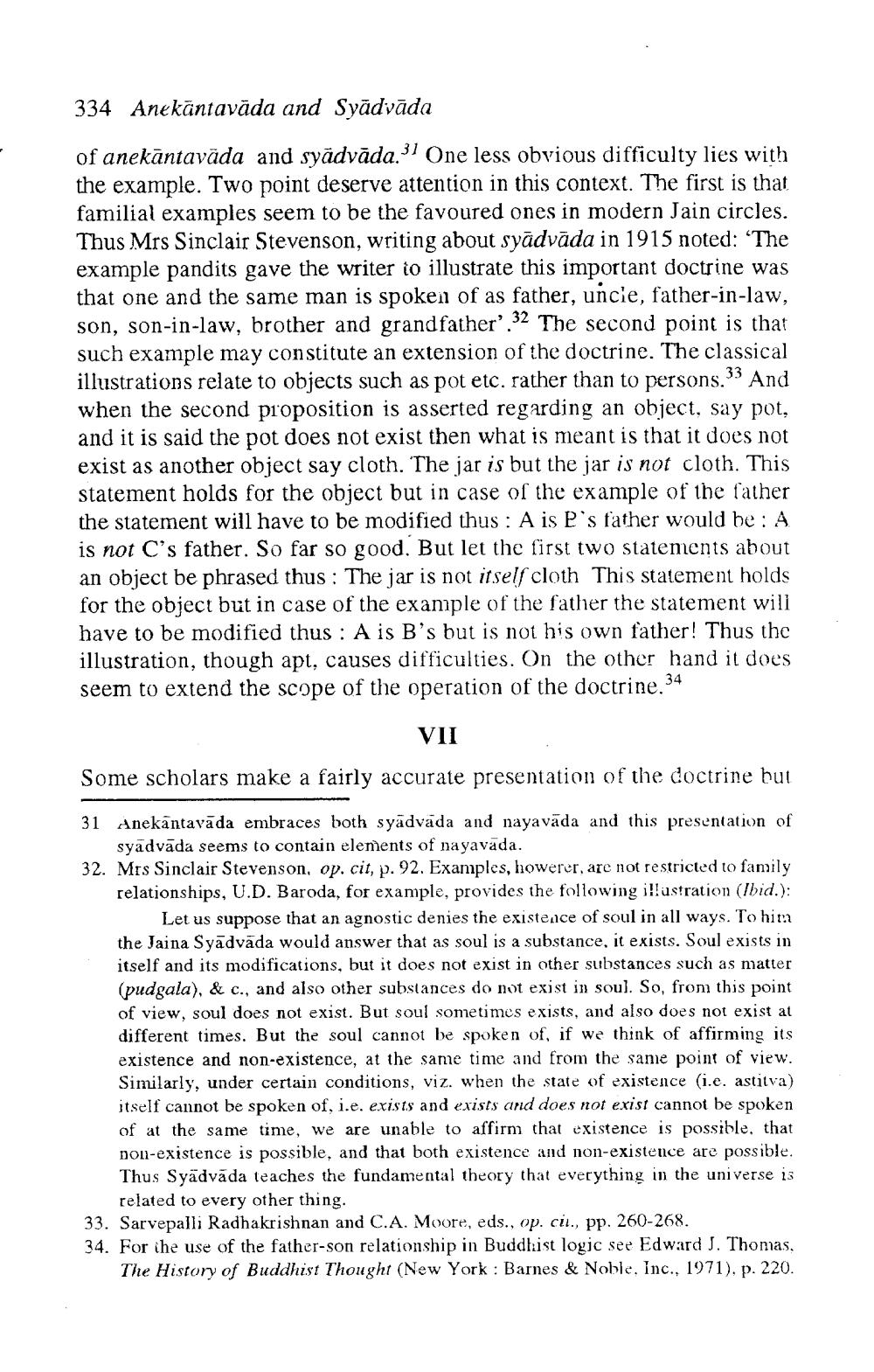________________
334 Anekäntavāda and Syādvāda
of anekāntavāda and syādvāda. 31 One less obvious difficulty lies with the example. Two point deserve attention in this context. The first is that familial examples seem to be the favoured ones in modern Jain circles. Thus Mrs Sinclair Stevenson, writing about syādvāda in 1915 noted: “The example pandits gave the writer to illustrate this important doctrine was that one and the same man is spokeil of as father, uncle, father-in-law, son, son-in-law, brother and grandfather'. 32 The second point is that such example may constitute an extension of the doctrine. The classical illustrations relate to objects such as pot etc. rather than to persons.33 And when the second proposition is asserted regarding an object, say pot, and it is said the pot does not exist then what is meant is that it does not exist as another object say cloth. The jar is but the jar is not cloth. This statement holds for the object but in case of the example of the father the statement will have to be modified thus : A is P's father would be: A is not C's father. So far so good. But let the first two statements about an object be phrased thus : The jar is not itself cloth This statement holds for the object but in case of the example of the father the statement will have to be modified thus : A is B's but is not his own father! Thus the illustration, though apt, causes difficulties. On the other hand it does seem to extend the scope of the operation of the doctrine.94
VII
Some scholars make a fairly accurate presentation of the doctrine but
31 Anekantavāda embraces both syadvada and nayavāda and this presentation of
syadvāda seems to contain elements of nayavada. 32. Mrs Sinclair Stevenson, op. cit, p. 92. Examples, howerer, are not restricted to family relationships, U.D. Baroda, for example, provides the following illustration (Ibid.):
Let us suppose that an agnostic denies the existence of soul in all ways. To him the Jaina Syadvāda would answer that as soul is a substance, it exists. Soul exists in itself and its modifications, but it does not exist in other substances such as matter (pudgala), & c., and also other substances do not exist in soul. So, from this point of view, soul does not exist. But soul sometimes exists, and also does not exist at different times. But the soul cannot be spoken of, if we think of affirming its existence and non-existence, at the same time and from the same point of view. Similarly, under certain conditions, viz. when the state of existence (i.e. astitva) itself cannot be spoken of, i.e. exists and exists and does not exist cannot be spoken of at the same time, we are unable to affirm that existence is possible, that non-existence is possible, and that both existence and non-existence are possible. Thus Syädvāda teaches the fundamental theory that everything in the universe is
related to every other thing. 33. Sarvepalli Radhakrishnan and C.A. Moore, eds., op. cit., pp. 260-268. 34. For ihe use of the father-son relationship in Buddhist logic see Edward S. Thomas,
The History of Buddhist Thought (New York: Barnes & Noble, Inc., 1971), p. 220.




